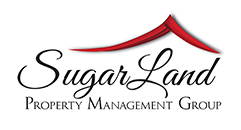.png)
How Tenants Can Effectively Handle Unresolved Maintenance Issues
One of the most common issues tenants face is when maintenance problems in their rental properties go unresolved. Whether it’s a leaking faucet, a malfunctioning heater, or a broken appliance, it’s frustrating to deal with issues that disrupt your comfort and safety. While it's the landlord’s responsibility to maintain the property, tenants often find themselves waiting longer than expected for repairs or, worse, not receiving any help at all.
If you're dealing with unresolved maintenance issues, don't worry. You have options to ensure your living conditions are safe and comfortable. In this post, we’ll walk you through how to handle maintenance problems and advocate for your rights effectively.
Step 1: Document the Issue
The first thing you should do when a maintenance issue arises is to document it. This step is crucial, especially if the problem persists or worsens over time.
Take Photos or Videos: If it's a visible problem, like a leaking ceiling or a broken window, take clear, dated pictures or videos. These will serve as evidence if the issue isn’t addressed in a timely manner.
Keep Records of Communication: Save any emails, text messages, or written correspondence with your landlord or property management company. It’s always a good idea to have a record of your requests.
This documentation not only helps you keep track of the issue but also proves you’ve done your part in notifying the landlord.
Step 2: Notify Your Landlord in Writing
Once you’ve documented the issue, it’s time to notify your landlord in writing. While phone calls or text messages might seem faster, written communication is always more formal and can be used as evidence if things don’t progress as they should.
When writing to your landlord, be clear, concise, and professional. Here’s what to include:
A description of the problem: Be specific about what’s broken or malfunctioning.
The date you first noticed the issue: This establishes a timeline.
A request for repairs: Ask when you can expect the problem to be addressed or repaired.
Contact information: Make it easy for your landlord to get back to you.
A sample email could look like this:
Subject: Maintenance Request for [Property Address] – Urgent Repair Needed
Dear [Landlord’s Name],
I hope you are doing well. I’m writing to notify you of an issue that needs urgent attention at my rental unit located at [address]. On [date], I noticed that [describe the issue], and it has not been resolved.
As this issue is impacting my living conditions, I would greatly appreciate it if you could arrange for the necessary repairs. Could you please let me know when this can be addressed?
Thank you for your prompt attention to this matter.
Best regards,
[Your Name]
[Your Contact Information]
Step 3: Know Your Tenant Rights
In many areas, tenants are legally entitled to live in a safe and habitable environment. Local tenant laws typically require landlords to address serious maintenance issues (such as plumbing problems, heating failures, or electrical malfunctions) within a specific timeframe.
If you’re unsure about your rights, take the time to research tenant laws in your area. Many states and cities have tenant rights organizations that can help you navigate the process. Knowing your rights will give you confidence when approaching your landlord and can serve as a strong point in your favor if you need to escalate the situation.
Step 4: Follow Up
If the landlord doesn’t respond or the issue isn’t resolved in a timely manner, don’t be afraid to follow up. In your follow-up email, kindly remind your landlord of your initial request and the timeline you’re expecting.
It’s also a good idea to include the original email or communication to show that you’ve already addressed the issue. If the maintenance issue is urgent (such as a plumbing leak or broken heating system during winter), you might want to stress the potential consequences of not resolving it quickly.
Step 5: Escalate If Necessary
If your landlord still hasn’t taken action, it may be time to escalate the situation. There are a few options you can consider:
Contact a Local Tenant Association: Many areas have tenant advocacy groups that can provide advice, support, and sometimes even legal assistance.
File a Complaint with Local Housing Authorities: In some cases, unresolved maintenance issues might violate housing codes or local ordinances. You can file a complaint with your city or county’s housing authority.
Withhold Rent (In Some Cases): In certain areas, tenants may have the right to withhold rent if their landlord fails to make necessary repairs. However, this is a legal measure that should only be used after carefully reviewing your lease and local laws. Always consult with an attorney or tenant advocate before taking this step.
Conclusion
Dealing with unresolved maintenance issues can be incredibly frustrating, but as a tenant, you have the right to live in a safe and well-maintained space. By documenting the issue, communicating clearly with your landlord, understanding your rights, and following up when necessary, you can help ensure that the problem gets resolved. If all else fails, escalating the situation through tenant associations or local authorities can give you the support you need to protect your living conditions.
Remember, your home is your sanctuary, and you deserve to feel safe and comfortable in it. Don’t hesitate to advocate for yourself—when you know your rights and take the proper steps, you can make sure that maintenance issues are handled quickly and effectively.





